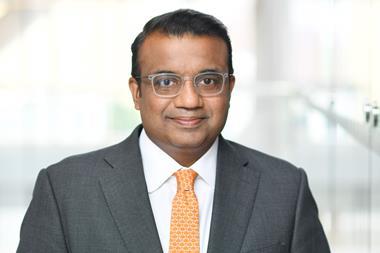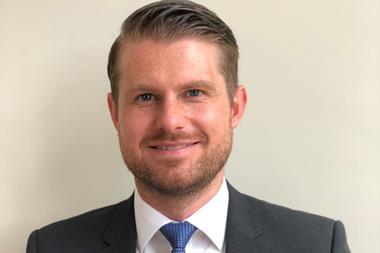“Global funds have more work to do as part of this retirement savings evolution”
Long ago, the Chinese philosopher Confucius wrote: “Let the old people live good lives, let those in working age contribute to the society, and let children be well-educated.” His words still have significance today, as societies around the world grapple with the challenge of providing retirement security – of enabling their older citizens to live good lives.
Today, changing demographics and financial stresses are leading governments, businesses, and individuals to re-examine their approach to saving for retirement. Many nations have turned to approaches based on defined contribution (DC) plans to replace or supplement the defined benefit (DB) retirement plans and resources offered by governments or employers – and many more countries may be considering implementing this model in the future.
This was the backdrop as ICI Global convened in Hong Kong to hold its first Global
Retirement Savings Conference in late June. The conference featured discussions among a diverse group of senior leaders from funds, national pension regulators, and international organisations from a number of countries, including Hong Kong, Australia, China, Peru, Sweden, Japan, the United Kingdom, and the United States.
Given our members’ experience working with institutional and individual investors, our goal was to foster a global dialogue about the long-term savings challenges facing nations around the world, and about the role that investment funds – as part of DC plans – can play in meeting those challenges.
The conference discussions, which centred around five major themes, provided attendees with interesting findings that will fuel the retirement dialogue in the future. Although we plan to publish a summary of insights learned at the conference in the coming months, we can identify some of the major findings now.
We discussed in detail the growing use of automatic features to help drive participant success, whether to enrol participants, increase their contribution rates, or direct them into default investments. Use of these automatic features recognises that participants have different levels of interest and expertise – some may prefer to exert control over their retirement accounts, while others may prefer the simplicity of using default options.
Second, for DC systems that allow participants to direct their investments, it is essential to provide transparent disclosure and education, to help them make necessary financial decisions. DC plan participants should receive robust disclosures regarding their plans as well as access to educational materials, whether from national campaigns, individual employers, financial services firms, or regulatory agencies.
Communication strategies such as those launched recently in Hong Kong and New Zealand recognise that workers face numerous expenses that compete against retirement saving. Because of this, the experts said, retirement communications must help workers understand the range of financial issues they might face and incorporate retirement savings as part of that overall education. This will ultimately lead to a better level of retirement preparedness.
Third, across the globe, DC systems are offering a range of investments to savers – but different countries are approaching investment choice in different ways. For example, part of Sweden’s public pension offers participants more than 800 investment options, Australia’s superannuation participants choose among 350 large funds, and Peru limits the number of investment choices (although it recently has expanded choices, adding lifecycle funds and other investment alternatives). Although offering a choice among investments is generally accepted as a best practice, some countries are considering ways to help plan participants avoid the confusion that too many options can bring.
At the same time, DC systems around the world are bringing greater diversification into default investment options. The practice of defaulting participants into a capital-preservation investment, such as a stable-value account or a money-market fund, is increasingly being replaced by use of more diversified investments. In particular, more countries are turning toward target date funds (also known as lifecycle funds) as their defaults. Target date funds are professionally managed funds designed to meet a participant’s investment objectives based on the number of years that they plan to remain in the workforce. These funds provide diversification and automatic rebalancing.
Sweden in 2010 changed the investment strategy of its state-managed default fund to a target date strategy. In the UK, all of the default funds in the National Employment Savings Trust (NEST) Programme are target date funds. In the US, the growing use of target-date funds among employers has helped keep retirement savers invested in the equity market since the financial crisis, despite an understandable decline in investors’ tolerance for risk.
And Anna Wu Hung-yuk, chairman of Hong Kong’s Mandatory Provident Fund Schemes Authority, stated at the conference that Hong Kong is exploring how target-date default strategies could be used to respond to the needs of Hong Kong’s workers.
The final theme we see is a rising sensitivity to fees. Like any other financial service or employee benefit, DC systems incur fees as they provide services to plan participants and comply with regulatory frameworks. Whether fees are set in a competitive market with robust disclosure, or through bidding or rebate systems set by a central plan provider, we are seeing more focus on fees – from Australia to the UK, from Hong Kong to Peru.
Australia’s superannuation system, for example, recently saw the launch of new low-cost default products. Pauline Vamos, CEO of the Association of Superannuation Funds of Australia (ASFA), says that the change is likely to transform competition among product providers and spur innovation within the industry there.
In other words, DC plans are growing and evolving as they take a larger role in providing retirement security in jurisdiction after jurisdiction.
Globally, investment funds already play a vital role in DC plans – and can do more in building the future of retirement. The products that our industry has developed contain key features that serve retirement savers well. They are professionally managed, well regulated, transparent, diversified, and cost-effective. And fund companies can provide valuable insights about how to reach, educate, and serve retirement savers.
But global funds have more work to do as part of this retirement savings evolution. We must help individuals save for retirement by continuing to educate them about the power and importance of retirement savings vehicles, including DC systems, and by being responsive to the social and economic pressures and concerns driving changes in the various systems.
The industry must continue to innovate, supporting changes in DC system design that will improve participants’ experience in these plans and their retirement savings outcomes.
Investment firms must help participants use these plans to their fullest potential. Firms should offer investment products that respond to the needs of savers and provide tools that help them make informed investment choices and manage their resources effectively through their working and retired years.
Finally, the fund industry must embrace and defend public policies that provide structures and incentives to help investors achieve retirement security.
The global fund industry appreciates the tremendous thought leadership provided by the speakers and participants at the Global Retirement Savings Conference, and welcomes the great responsibility of helping people achieve their retirement savings goals. As nations around the world work to modernise their retirement systems, we will continue to help them meet that challenge.
































No comments yet